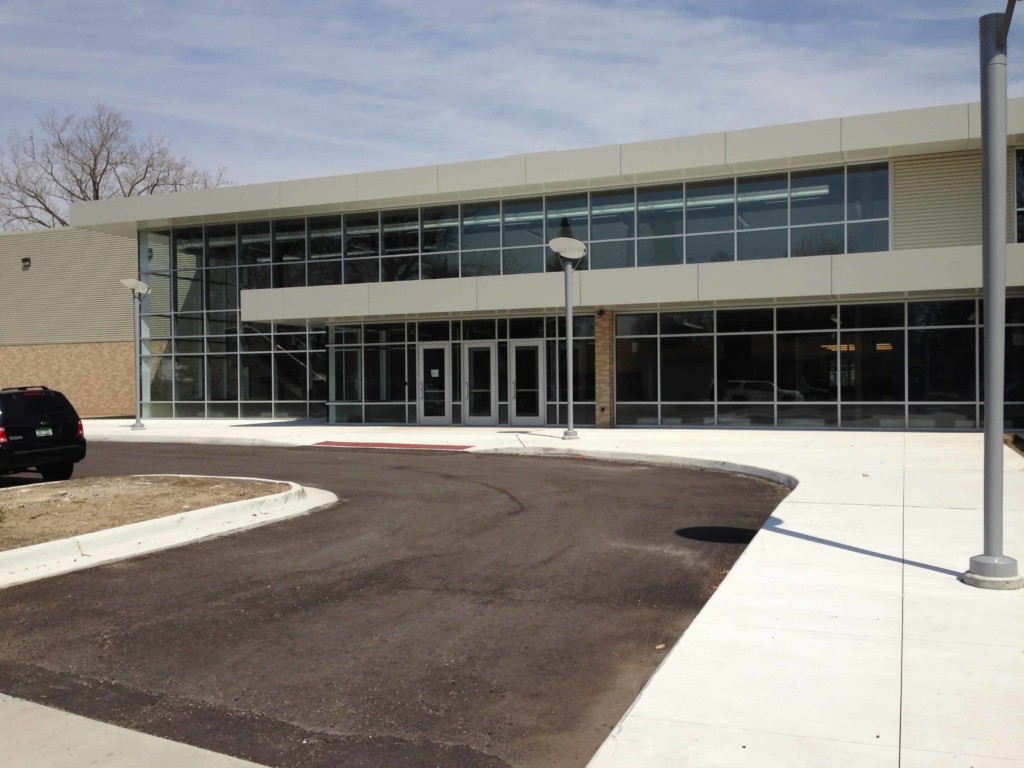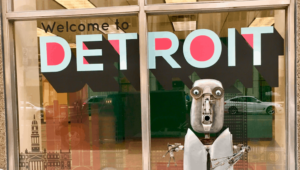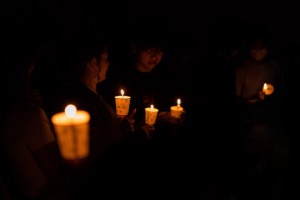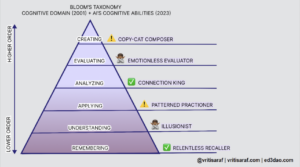Detroit: Pulling Out of the Death Spiral

“The Motor City’s traditional district remains the worst-performing big-city school operator in both the Midwest and the nation,” reported RiShawn Biddle. “With 69 percent of its fourth-graders and 57 percent of eighth-graders being functionally illiterate in 2011, according to the National Assessment of Educational Progress, Detroit has become infamous for perpetuating educational neglect and malpractice.” Biddle notes, “the district’s financial mismanagement has been even more spectacular.”
Enrollment in the state’s largest district has dropped by more than 100,000 students since 2003–more dramatic than New Orleans. The Detroit News reports that, “District officials have shuttered more than 100 school buildings in an attempt to right size the district as it fell deeper into a financial crisis.” The city is in even worse shape and was taken over by the state on March 1st.
So, asks the Smart Cities reader, why write about the disaster that is Detroit? Like New Orleans, Detroit families are beginning to benefit from the man-made disruption and corruption. The portfolio emerging from the disaster is worth watching.
Disaster Recovery. Modeled after the successful Louisiana Recovery School District (RSD), Michigan created a statewide school improvement district in 2011. The Education Achievement system will assume operation of the lowest 5 percent of schools. Education Achievement Authority (EAA) started operating 15 Detroit schools in September 2012.
While the RSD has relied on chartering, the EAS continues to operate schools with only a few charters. Chancellor John Covington, building on work he started in Kansas City, is leading development of an NGLC grant winning blended competency-based turnaround model. The Buzz platform built in partnership with Agilix (the Brainhoney people) features Compass Learning’s Odyssey that “uses assessment data to prescribe a personalized learning path complete with rigorous and engaging curriculum and instruction.” The approach is tailored by School Improvement Network.
Teach for America was shut out of Detroit for years but two years ago they were invited back to the District, to EAA, and to charter schools in the city. The University of Michigan, in nearby Ann Arbor, sends more grads to TFA than any other school.
Matchbook Learning is another NGLC grant winner and EAA partner working with middle schools in Detroit. As we noted in January, the conversion focuses on school culture, teacher coaching, stakeholder engagement, and blended classrooms powered by EdElements. Students are “grouped into small and flexible groups based on student readiness, interests, learning style and profile, and specific instructional objectives.”
The Future of EAA. David Esselman was on EAA design team for the original structure. With help from Parthenon, the team learned from statewide districts in Louisiana and Tennessee. While the team “Wanted to go through regular legislative process to establish the EAA, it had to go through an inter local agreement limited to Detroit — fast, but limited.” Legislation to make it statewide failed in the lame duck session. It was reintroduced and recently came out of committee and, “It’s going to be a fight”. Esselman doesn’t think the EAA will ever have more than 50 schools (bottom 1%).
On early results, Esselman admits, “It’s a mixed bag.” He notes, “Very good results for more kids that I would have expected at this point. Some of the schools that were in a death spiral have stabilized.” He points out the challenges associated with the decision to directly run schools and build an organization at the same time.
Esselman thinks outside investment, like the $10 million from the Broad Foundation is helping to draw attention of partner organizations. “Detroit is more interesting now than New Orleans after the storm.” He notes funding of $12,000 per student and “a whole range of incredibly strong communities.” It’s a place where, “a person with a new model and a good idea can attract talent,” says Esselman. “The talent is there in the tri-county area,” said Esselman, “What’s missing is the leadership.”
Charters. Detroit has the third largest percentage of charter school students in the country at 37%. However, the ecosystem is chaotic with 32 separate authorizers and lots of operators but brand name operators are glaringly absent.
Natasha Baker is the Detroit Public Schools (DPS) Chief Innovation Officer and Kisha Verdusco is the new director of charter schools. They replace Detroit charter veteran Doug Ross who did an 18 month stint at DPS that ended last month. While there Ross set up Detroit Rising Prep Schools a semi-autonomous network of district schools. Principals in the 3,000 student network can make staffing, budgeting, and curric decisions. They have governing councils like charter school boards but remain part of the DPS bargaining agreement.
The DPS Office of Charter Schools authorizes 17 schools that serve more than 5,000 students in a variety of settings from kindergarten through high school.
Henry Ford Academy, opened in 1997 in the Henry Ford Museum, is a great example of a museum-based STEM school. With support from Ford Motor Company and the Bill & Melinda Gates Foundation, the The Henry Ford Learning Institute, supported four new schools in Detroit, Chicago, and San Antonio. This model partnership combines the best thinking from business, non-profit, and public education toward the common goal of building a school that prepares students for life in the 21st century. Design thinking and “new ways of doing school” are influenced by long-time relationship with IDEO and Stanford d.school. Design thinking for curriculum and community engagement. All schools have a strong community partner (i.e. School for Creative Studies).
Cornerstone Charter School (pictured) opened two new blended charters this school year, an elementary (which opened K-4) and a high school (starting with ninth graders). CEO Tom Willis said, “This is our first blended high school, but we have a 20-year record of delivering high-quality Detroit schools. We have two existing charter schools serving 1,000 students.” They also run the top performing independent primary school.
“We’ve had some wonderful partners,” said Willis, “These include Grand Valley State University and The Detroit Medical Center. As noted in January, Cornerstone uses content from Compass Learning, Apex, Revolution Prep, and Achieve 3000. To progress, students must show mastery on a variety of assessments. Progress is noted on dashboards and reviewed weekly with a Relationship Manager. Differentiated roles also include Rigor Managers and Relevance Managers. Cornerstone Charter Health High School has a close partnership with the Detroit Medical Center. “Throughout their academic experience, students are encouraged to explore health- related careers and competencies through projects, coursework, and internships.” said Willis.
Advocates. In addition to state intervention, local advocates are taking their schools. back. A coalition group, Excellent Schools Detroit, is funded by Kellogg, Kresge, Skillman, McGregor, and United Way. The agenda includes public will building, talent development, new school creation, accountability, and early childhood development. VP Armen Hratchian said, “We look for gaps in the ecosystem, work with partners to build solutions, and move on.” On will building, they issue report cards on all schools in Detroit. On the talent front, they worked with University of Michigan-Flint on a residency model (to complement TFA) and collaborate with Leading Educators in NOLA.
Over the past year Education Pioneers has expanded to smaller markets and Detroit is next on their list. Jason Weeby, who headed up the initial phases of the expansion, cites a combination of factors that led them to Detroit. “More than any other city in the US, Detroit has optimal conditions for an ambitious education organization like ours. The dire circumstances mean there’s motivated stakeholders; the city has a strong, focused philanthropic community; and despite, or because of, the tumultuous political situation there’s tremendous room for innovation.” Education Pioneers will begin with a modest number of analyst and graduate school fellows in 2013 but have ambitions to expand rapidly in the region.
Conclusions. Jason Weeby, Education Pioneers, draws these conclusions about efforts to pull Detroit from the tail spin:
- DPS has the unenviable challenge of reversing trends that have earned them the distinction as the worst urban school district in the US while pulling itself out of a fiscal emergency in a city that itself is on the brink of bankruptcy. All of this financial ruin has two financial managers, Kevyn Orr and Roy Roberts running the city and school district, respectively.
- The real conditions for innovation exist outside of the city government and school district. Because these institutions have suffered from corruption and mismanagement for so long, the country’s third largest charter school market has emerged, the philanthropic community invests aggressively in education initiatives, and entrepreneurs are finding a supportive and exciting ecosystem.
- Excellent Schools Detroit holds tremendous potential for identifying the most pressing issues in the education community, attracting the nation’s top organizations and individuals, brokering local funding, attracting national funding, and coordinating reform efforts. Their leadership is strong and widely respected across Detroit, no small feat for a deeply factionalized city.
- Detroit is beginning to be a hot topic at national education conferences where leaders new and growing organizations gather.
While Biddle and I generally support mayoral control Detroit “is a sobering reminder of why there is no one solution for advancing the much-needed reform of American public education. It is, however, as Biddle notes, time to move beyond the traditional urban district model to a portfolio of options. Like New Orleans, Detroit could emerge as a model of rapid progress powered by multiple operators–this time with a blended twist.
Esselman summed it up, “There’s no place with so many kids transitioning so quickly to a blended model. It’s the largest blended learning case study out there”.
Thanks to Jason Weeby, Education Pioneers, for conducting interviews for this post. Disclosure: Compass Learning is a Getting Smart Advocacy Partner. Tom was an NGLC judge.








0 Comments
Leave a Comment
Your email address will not be published. All fields are required.